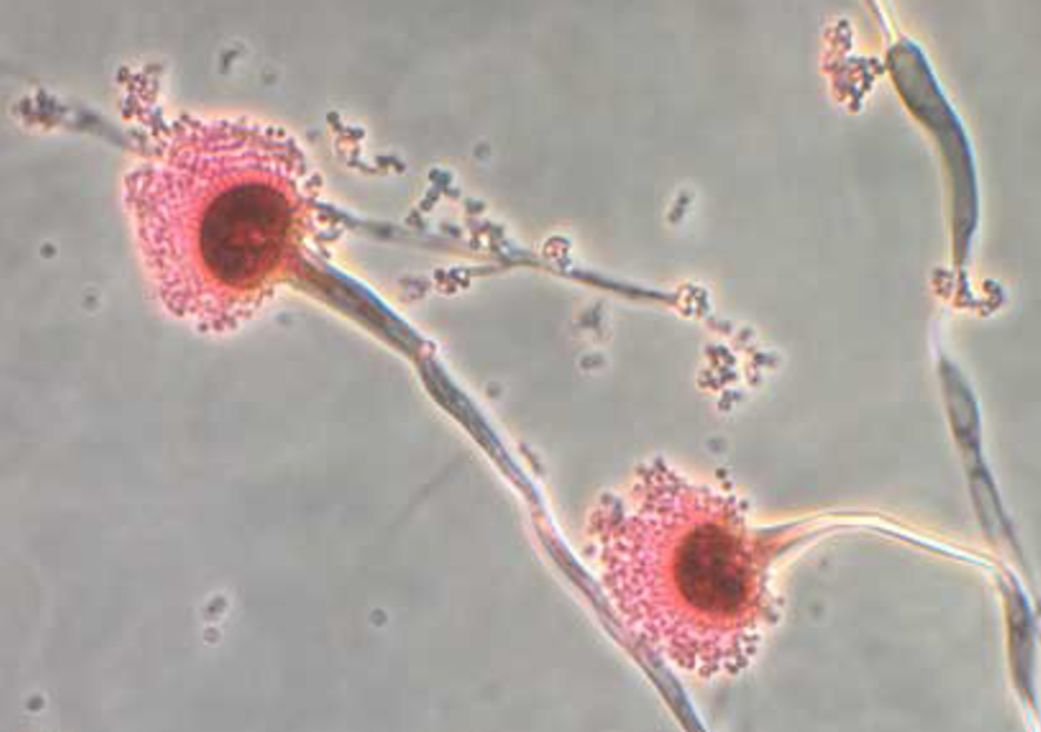## Mushroom Mayhem: A Fungi That Eats You From The Inside Out Is Coming
Forget zombies, the real horror story might be lurking in the soil. A terrifying new threat is emerging as our planet heats up: a parasitic fungi capable of “eating you from the inside out”. CNN reports that this chilling organism, known for its gruesome ability to infect and consume insects, could be poised to make a leap to larger prey.

From Spores to Infection: Understanding the Mechanism of Aspergillosis

Aspergillus, a ubiquitous group of fungi residing in soils, compost, and water, poses a significant threat to human health. While these organisms play a crucial role in ecosystems, certain Aspergillus species can cause aspergillosis, a life-threatening disease primarily affecting the lungs. Understanding the mechanism of aspergillosis is essential for developing effective prevention and treatment strategies.
Aspergillus fungi reproduce through the release of microscopic spores, which are dispersed widely through the air. These spores are inhaled by humans daily, with most individuals experiencing no adverse effects. The human immune system effectively clears the spores in healthy individuals. However, individuals with compromised immune systems, such as those with lung conditions, cancer, or organ transplants, are at heightened risk of developing aspergillosis.
If the immune system fails to eliminate the spores, they germinate within the lungs and begin to grow, forming filamentous structures known as hyphae. These hyphae penetrate and invade lung tissue, leading to inflammation and tissue damage. As the infection progresses, it can spread to other parts of the body, including the brain, sinuses, and heart.

Vulnerable Populations: Who is Most at Risk From Fungal Infections?
Certain populations are particularly vulnerable to fungal infections, including aspergillosis. These groups often have weakened immune systems or underlying health conditions that make them more susceptible to infection.
- Individuals with Lung Conditions: People with chronic lung diseases, such as asthma, cystic fibrosis, and chronic obstructive pulmonary disease (COPD), have impaired lung function and increased susceptibility to fungal infections.
- Immunocompromised Individuals: Individuals with weakened immune systems, such as those undergoing chemotherapy, receiving organ transplants, or living with HIV/AIDS, are highly vulnerable to opportunistic fungal infections like aspergillosis.
- Infants and Young Children: Infants and young children have developing immune systems and are more susceptible to infections, including fungal infections.
- Elderly Adults: Older adults often have age-related immune decline and are at increased risk of developing fungal infections.
- Research and Development: There is an urgent need for research to develop new antifungal medications with improved efficacy and reduced resistance. Additionally, research is needed to better understand fungal pathogenesis, immune responses, and the factors that contribute to fungal spread.
- Early Detection and Diagnosis: Improved diagnostic methods are needed to enable early and accurate diagnosis of fungal infections. This will allow for prompt initiation of treatment and reduce the risk of complications and mortality.
- Public Awareness and Prevention: Raising public awareness about the risks of fungal infections and preventive measures is crucial. This includes promoting good hygiene practices, avoiding contact with contaminated environments, and seeking medical attention if symptoms of infection develop.

The Grim Toll: Mortality Rates and Diagnostic Challenges of Aspergillosis
Aspergillosis can be a serious and life-threatening illness, with significant mortality rates. Early diagnosis and treatment are crucial for improving patient outcomes.
Mortality rates for aspergillosis range from 20% to 40%, depending on the severity of the infection and the patient’s underlying health status. The high mortality rate is partly attributed to the difficulty in diagnosing aspergillosis, as its symptoms often mimic those of other respiratory illnesses.
Doctors may initially misdiagnose aspergillosis as pneumonia, bronchitis, or other respiratory infections. This delay in diagnosis can allow the infection to progress and become more severe, leading to complications and increased mortality risk.
Facing the Future: Combatting the Fungal Threat
The Limited Arsenal: Current Antifungal Medications and the Rise of Resistance
The treatment of fungal infections is challenging due to the limited number of antifungal medications available. Moreover, there is a growing concern about the emergence of antifungal resistance, which makes treatment more difficult and increases the risk of complications.
Currently, there are only four major classes of antifungal medications: azoles, polyenes, echinocandins, and allylamines. However, the overuse and misuse of these medications have led to the development of resistant fungal strains, particularly in healthcare settings.
Strengthening Defenses: The Need for Research, Early Detection, and Public Awareness
Addressing the increasing threat of fungal infections requires a multi-faceted approach that includes research, early detection, and public awareness.
A Call to Action: Preparing for a World Where Fungi Pose an Increasing Threat
The increasing threat of fungal infections demands a collective response from governments, healthcare professionals, researchers, and the public. It is essential to prioritize research, strengthen surveillance systems, develop new treatment strategies, and raise public awareness to mitigate the risks posed by these emerging pathogens.
Gamestanza’s Take
At Gamestanza, we believe that gaming can be a powerful tool for raising awareness about critical issues, including the growing threat of fungal infections.
The Lessons From Fiction: How “The Last of Us” Highlights the Potential Dangers of Fungal Infections
The recent HBO series “The Last of Us” has brought the potential dangers of fungal infections to the forefront of public consciousness. While the show portrays a fictionalized scenario, it highlights the real-world threat posed by certain fungi, such as the one explored in the study mentioned earlier, Aspergillus flavus.
The show’s depiction of a highly contagious and deadly fungal pandemic serves as a cautionary tale, emphasizing the importance of research, preparedness, and public awareness in mitigating the risks of emerging infectious diseases.
Gamers as Global Citizens: Using Gaming to Raise Awareness and Drive Action
Gamers have a unique ability to connect with stories and engage with complex issues. We believe that the gaming community can play a vital role in raising awareness about fungal infections and promoting action to address this growing threat.
Through in-game events, educational campaigns, and partnerships with health organizations, we can leverage the power of gaming to inform, educate, and inspire action among players worldwide.
Exploring Fungal Futures: The Role of Games in Educating and Engaging Players on This Critical Issue
Gamestanza is committed to exploring the intersection of gaming and global health issues. We envision a future where games are not only entertaining but also serve as powerful tools for education, awareness-raising, and promoting positive social impact.
By creating engaging and immersive gaming experiences, we can help players understand the complexities of fungal infections, the importance of prevention, and the need for global collaboration to address this growing challenge.
Conclusion
So, there you have it. A fungus that could quite literally “eat you from the inside out” – sounds straight out of a horror movie, right? But this isn’t fiction; it’s a real threat lurking in the shadows, potentially fueled by the very climate crisis we face. As temperatures rise, the range of this insidious organism, known as Batrachochytrium dendrobatidis, expands, putting amphibians everywhere at risk. Think about it – the delicate balance of our ecosystems is delicately poised, and the disappearance of amphibians could have catastrophic ripple effects. What does this mean for gamers? Well, beyond the unsettling imagery, this story highlights the interconnectedness of our world. Gaming often transports us to fantastical realms, but the reality is that our virtual worlds are deeply intertwined with the real one. A healthy planet is crucial for our survival, and the fight against climate change is a fight for the future of gaming itself. As gamers, we have a responsibility to be informed and engage in the conversation – after all, our digital adventures are just a small part of a much larger, and very real, story. The fate of the planet, and our beloved gaming ecosystems, depends on it.
